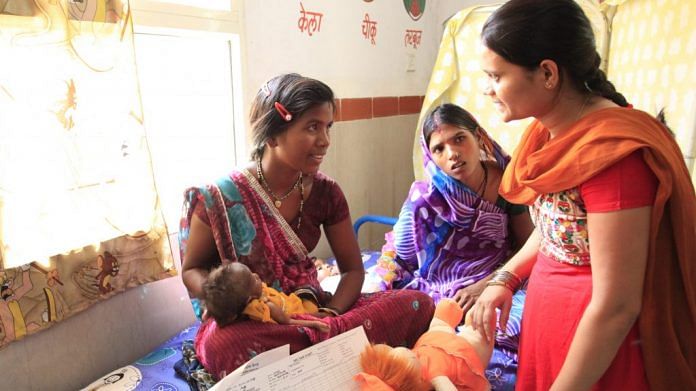Junior health minister Ashwini Choubey and the NHM, which oversees the project, are far apart on the numbers for 2 of the last 3 years.
New Delhi: Over the last three years, junior health minister Ashwini Kumar Choubey has shared with Parliament the high numbers of people who have benefitted from Janani Suraksha Yojana (JSY) — the Modi government’s flagship cash transfer scheme aimed at reducing maternal and neo-natal deaths in the country.
The National Health Mission (NHM), which oversees the welfare programme under his ministry, has also shared a set of numbers of the beneficiaries for the same three years. But its numbers are sharply lower than those claimed by the minister for two of these three years.
And neither is sure which is accurate.
Such has been the mismatch that the health ministry is now reviewing the figures to ascertain the exact number of beneficiaries after ThePrint pointed out the anomaly.
The latest instance of differing numbers came on 28 December, when Choubey told the Lok Sabha that in 2017-18, 108 lakh patients had benefitted from the scheme. He was providing answers to question number 2811 in the lower house of Parliament.
But two months earlier, in September 2018, the NHM had pegged the number of JSY beneficiaries — all poor and marginalised women — at 76 lakh for the 2017-18 period.
The massive mismatch — of nearly 32 lakh beneficiaries — has raised questions of whether the minister was exaggerating the figures in Parliament.
But since ThePrint contacted the health ministry to understand the anomaly in numbers, the government has begun to update the figures mentioned in the NHM report.
ThePrint first left a mail and messages to Choubey’s office four days ago on 29 January.
The government’s Press Information Bureau responded to the mail a day later. “The figures referred to are dynamic and get updated as and when the reports are received from states,” the PIB reply said. “These figures of the number of beneficiaries, are as reported by the states and which were quoted in the Lok Sabha by the Honorable Minister of State, are being updated in the NHM MIS reports.”
The ministry, however, did not clarify how the figures were dynamic only for 2015-16 and 2017-18, where there are mismatches, but not for 2016-17, when the minister and ministry had the same figure.
The PIB spokesperson on health also confirmed through a text message that the government would be updating these figures in the NHM report.
Also read: ‘Modicare’ runs into hurdles. Here’s what’s delaying world’s largest healthcare programme
Question marks over the process
The mismatch, however, also raises questions of the process as under the scheme, between Rs 600 and Rs 1,400 is transferred to the bank accounts of the beneficiaries. Even by the most conservative estimates, a mismatch of 32 lakh would mean Rs 192 crore could be unaccounted for.
A senior official at the NHM told ThePrint that “the ministry is examining the numbers to see how two figures for ‘total beneficiaries with differences running in lakhs’ have been arrived.”
“There is some confusion and I don’t think that anyone has tried to exaggerate the beneficiary numbers,” the official said.
This, however, isn’t the first time that the figures haven’t matched. For instance, in 2015-16, the NHM report says that 75 lakh women benefitted from the scheme while Choubey’s response in Parliament put the figure at 104 lakh women.
It amounts to a difference of 29 lakh beneficiaries involving around Rs 174 crore.
Only for 2016-17, do the minister’s numbers correspond with those listed by the NHM — both had the number of beneficiaries at 105 lakh.
The scheme, states and disbursal
Under the scheme, states are divided on the basis of their health indicators as low performing and high performing ones.
Low Performing States (LPS) include those with low institutional delivery rates such as Uttar Pradesh, Uttarakhand, Bihar, Jharkhand, Madhya Pradesh, Chhattisgarh, Assam, Rajasthan, Odisha, and Jammu and Kashmir. All other states have been classified as ‘high-performing (HPS)’ ones.
In the LPS category, all pregnant women regardless of age and number of children, who deliver in government health centres or private accredited health facilities, are eligible to receive an incentive of Rs 1,400 in rural areas and Rs 1,000 in urban areas.
In HPS, the scheme is restricted only to pregnant women who fall under the below poverty line (BPL) or are from the Scheduled Caste (SC) or Scheduled Tribe (ST) categories. They are given Rs 700 in rural areas and Rs 600 in urban areas for delivering in a government health centre or an accredited private medical institution.






